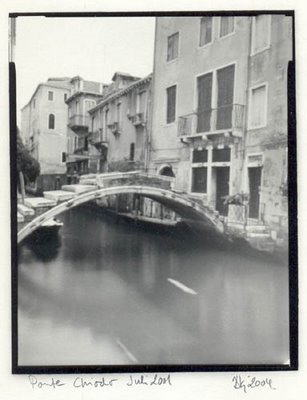 Venice may have stood for hundreds of years, but its population is recycled every few days as tourists come and go. Residents feel that such an influx is edging them out.
Venice may have stood for hundreds of years, but its population is recycled every few days as tourists come and go. Residents feel that such an influx is edging them out.Mattia Baseggio runs a guesthouse in Venice: Number 3749, Sestriere di Cannaregio.
It is one of the great peculiarities of Venice: locals do not follow street names - they follow numbers and neighbourhoods.
The guesthouse which has all the history and charm you would expect of a Venetian house has been lovingly restored by Mattia's wife, an architect, and filled with the family antiques. It has a splendid private garden, in which the guests have their breakfast, looking out over the Ponte Chiodo, the only remaining bridge of its kind in Venice. Although it is a perfect place for a holiday it was once a private house having been converted from two empty family apartments that had been left to ruin.
Sadly many of the families who lived in Venice for generations are moving out because house prices are impossibly high - empty apartments and buildings have been snapped up by wealthy hoteliers - and young people can no longer afford the cost of living.
"Almost half my friends have disappeared," said Mattia. "This is now one of the only ways to earn a living in Venice. The easiest thing to do here is to run a guesthouse. If you want a profession or a career you have to move away."

Over the past 50 years the population of the historic centre of Venice has fallen from 171,000 residents in 1951 to fewer than 62,000 and officials say the exodus shows no signs of abating - another 8,000 are predicted to follow in the next 10 years.
Ponte Chiodo is not what it used to be ....
As Venetians leave, the tourists continue to arrive. (Eighteen million every year). At times it is impossible to get onto a Vaporetto river-bus without finding it packed with suitcases and tourists. "Some of them come looking for the real Venice," said Mattia. "But 80% of them come for a day, visit St Mark's and disappear. They miss the very essence of Venice. And it's a culture that is fast disappearing."
There is no hiding the changes around Venice. Shops are disappearing. Some neighbourhoods now have no grocery shops for local residents. Souvenirs fill the old Ritz cinema. There used to be 10 cinemas in the centre of Venice, but now there is just one. The city is swamped with high-priced designer shops, which might interest the day-tripper, but are of little use to people who live in the city.
"People have been leaving Venice since the 50s," says Venice Mayor Massimo Cacciari. "It is nothing new. But the population is now so small it's critical we address the reasons why they are leaving. We have to protect their way of life. We have to guarantee cheaper houses, we have to tackle the traffic problems on the canals, we have to improve public services. It can only be done if the state contributes and if it provides extraordinary finance to protect our buildings and our culture."
Today a 100-sq-m (1,000-sq-ft) apartment in Venice sells for up to 800,000 euros ($1m; £540,000) but the council is trying to build cheaper housing and have set out three areas of the city for the development of houses which will be rented to middle-class families.
Venice can no longer exist without its tourists as they are the main source of income and in a city that faces a constant battle against rising water levels, it is money that is desperately needed.
"We must have the tourists," said Mr Cacciari. "We want them to keep coming, but it is not enough. This is becoming a city solely for tourism. Venice is becoming a museum.
Adapted from Christian Fraser’s report for BBC NEWS:


